11 Reconstruction
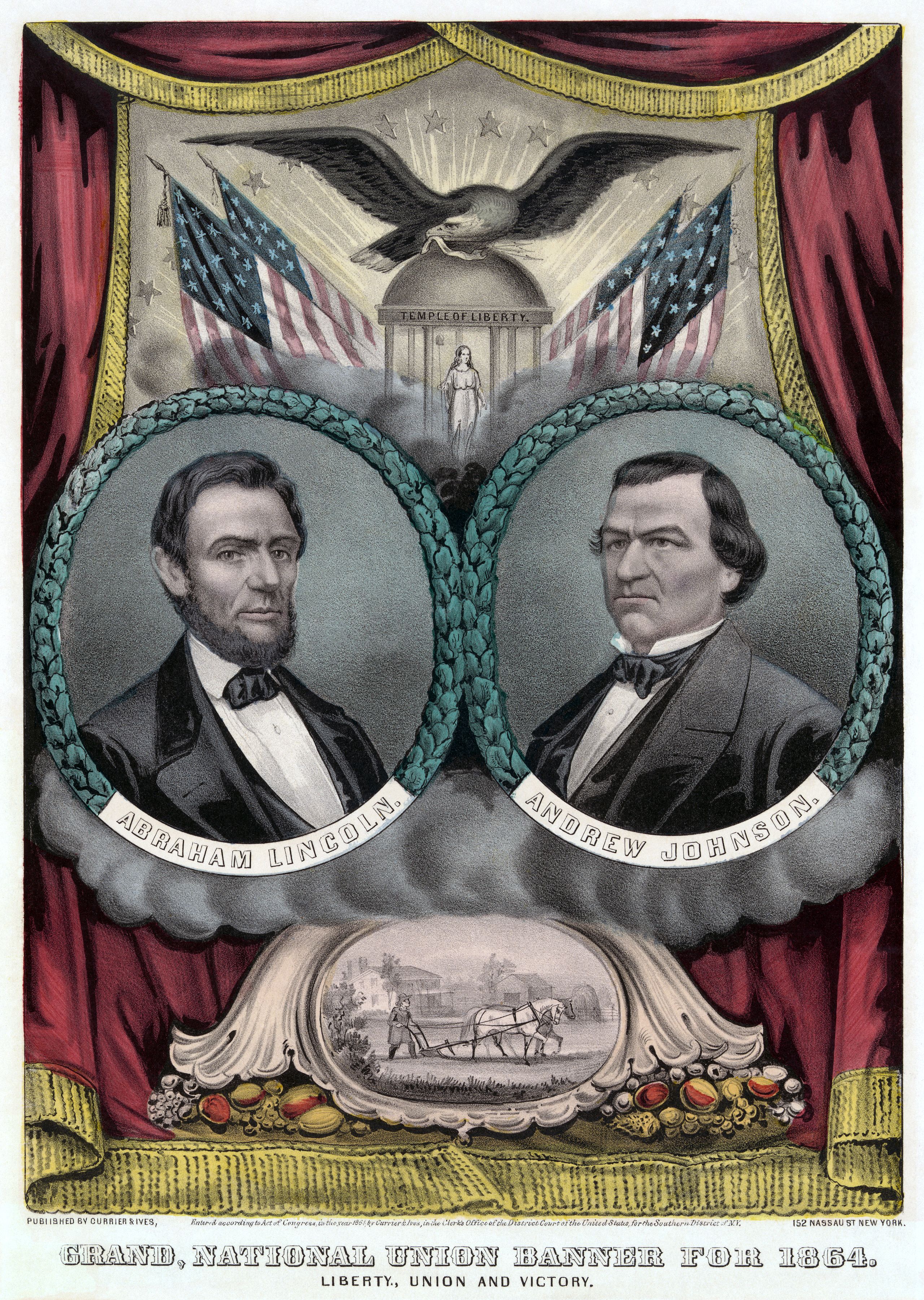
Lincoln’s assassination elevated Vice President Andrew Johnson, a Democrat, to the presidency. Johnson came from very humble origins. He was born into extreme poverty in North Carolina and never attended school, so he presented himself as a self-made man. Johnson had been apprenticed as a tailor and had worked in the trade before going into politics. His wife had taught him how to read and he gradually rose up the political ladder in Tennessee, earning a reputation for being a skillful stump speaker and a staunch defender of poor southerners. He was elected to serve in the House of Representatives in the 1840s, became governor of Tennessee the following decade, and then was elected a U.S. senator just a few years before the start of the Civil War. When Tennessee seceded, Johnson had remained loyal to the Union and stayed in the Senate. As Union troops marched on his home state of North Carolina, Lincoln appointed him governor of the then-occupied state of Tennessee, where he served until being nominated by the Republicans to run for vice president on a ticket with Lincoln. The nomination of Johnson, a Democrat and a slaveholding southerner, was a pragmatic decision for Republicans. It was important for them to show that the party supported all loyal men, regardless of their origin or political persuasion. Johnson appeared an ideal choice, because his nomination would bring with it the support of both pro-Southern elements and War Democrats who rejected the conciliatory stance of the Copperheads, northern Democrats who opposed the Civil War. Johnson’s presence on the ticket continued to split the Democrats and helped insure Lincoln’s reelection.
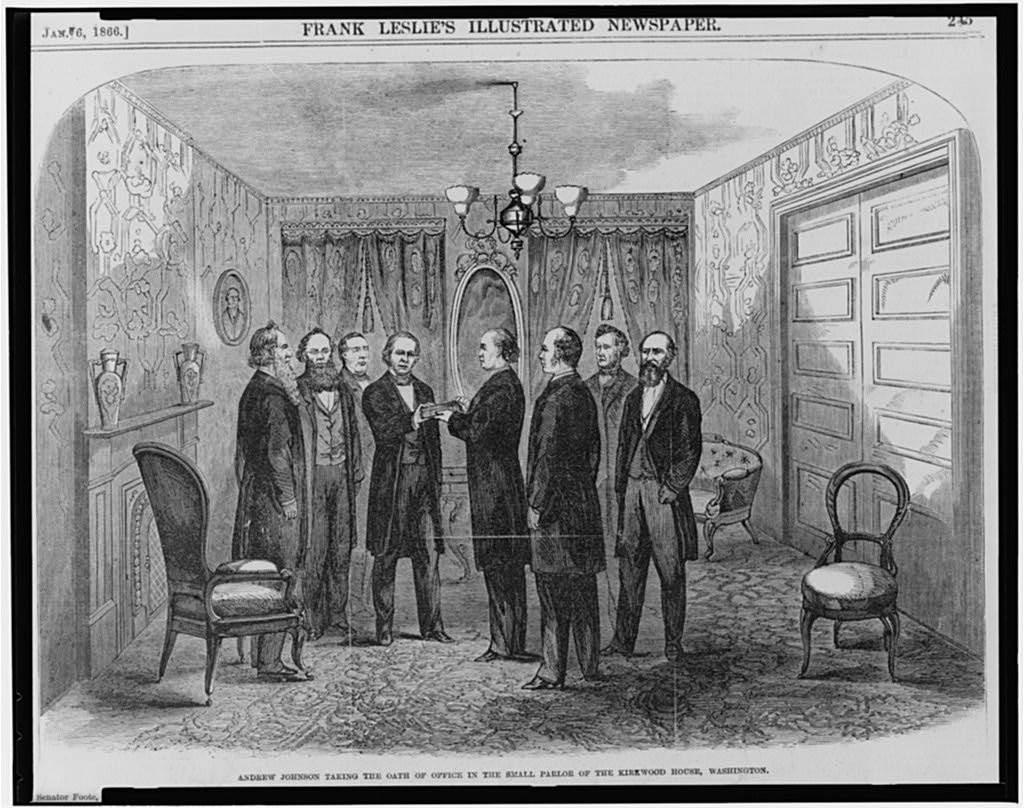
Unexpectedly elevated to the presidency by Lincoln’s assassination in 1865, this formerly impoverished tailor’s apprentice and unwavering antagonist of the wealthy southern planter class now found himself responsible for the restoration of a destroyed South to the Union. Lincoln’s legal argument as president had been that the secession of the Southern states was never legitimate. The South had not succeeded in leaving the Union from Lincoln’s position, therefore they still had certain rights to self-government as states. Following Lincoln’s plan for restoring the South, Johnson desired to quickly reincorporate the states on lenient terms and heal the wounds of the nation. This position angered many in his own party. The northern Radical Republican plan for Reconstruction looked to overturn the southern society that had supported secession and specifically aimed at ending the plantation system. President Johnson quickly disappointed Radical Republicans when he rejected their idea that the federal government would provide voting rights for freed slaves. Instead, President Johnson’s Proclamation of Amnesty and Reconstruction in May 1865 provided sweeping “amnesty and pardon” to rebellious Southerners. It returned to them all their property other than their former slaves, and it asked only that they pledge their support for the Constitution of the United States. The only Southerners not covered by this amnesty were members of the Confederate political leadership, high-ranking military officers, and persons with taxable property worth more than $20,000. Including the wealthiest Southerners in the disqualification was meant to make it clear to the southern planter class that they bore a unique responsibility for the disastrous war and its consequences. But it also satisfied Johnson’s desire to exact vengeance on a class of people he had fought politically for much of his life. For wealthy Southerners to regain their rights, they would have to swallow their pride and request a personal pardon from Johnson himself.
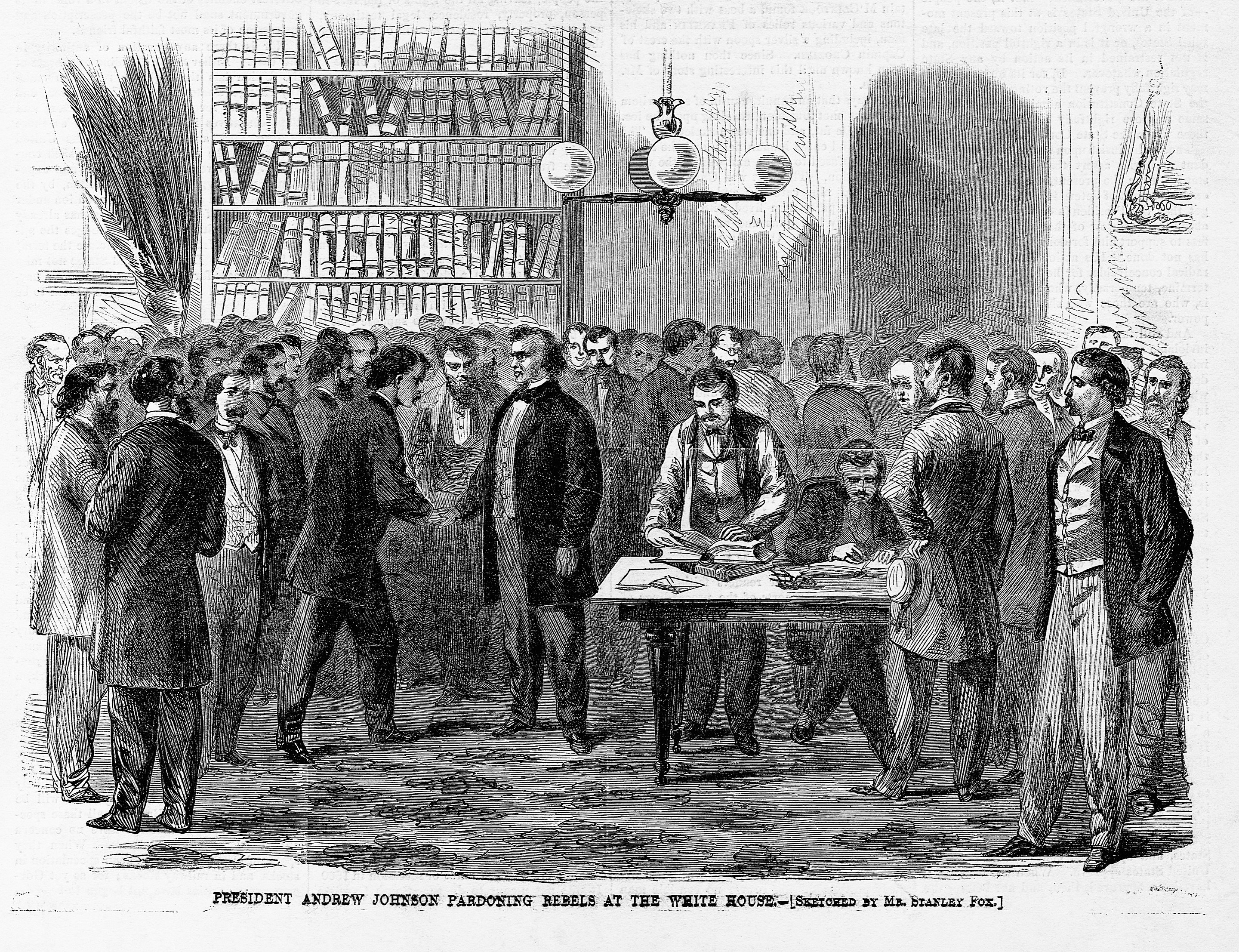
The requirements for readmission to the Union for the Southern states were also fairly straightforward. States were required to hold individual state conventions where they would repeal the ordinances of secession and ratify the Thirteenth Amendment. By the end of 1865, a number of states had complied and former Confederate leaders were in Washington looking to reclaim their seats in Congress. Among them was Alexander Stephens, the vice president of the Confederacy, who had spent several months in a Boston jail after the war. Despite the outcries of Republicans in Congress, by early 1866 Johnson announced that all former Confederate states had satisfied the requirements he had set. According to Johnson, nothing more needed to be done; the Union had been restored. Radical Republicans in Congress did not agree and along with their northern constituents, they greatly resented the President’s lenient treatment of the former Confederate states and especially the return of former Confederate leaders like Alexander Stephens to Congress. Congress refused to acknowledge the southern state governments Johnson allowed and would not permit senators and representatives from the former Confederate states to take their places in Congress. Instead, the Radical Republicans created a joint committee of representatives and senators to oversee Reconstruction. In the 1866 midterm congressional elections, they gained control of the House, and in the ensuing years they pushed to dismantle the old southern order and completely reconstruct the South. This effort put them squarely at odds with President Johnson, who remained unwilling to compromise with Congress, setting the stage for a series of clashes.

Formerly enslaved people celebrated the end of slavery and immediately began to take steps to improve their own condition by seeking what had long been denied to them: land, financial security, education, and the ability to participate in the political process. They wanted to be reunited with family members, to have the opportunity to make their own independent livings, and to exercise their right to have a say in their own government. Unfortunately, blacks in the South faced retaliation from defeated but un-reconciled southerners who were determined to keep former slaves an impoverished and despised underclass. Recognizing the widespread devastation in the South and the dire situation of freed people, Congress created the Bureau of Refugees, Freedmen, and Abandoned Lands in March 1865, popularly known as the Freedmen’s Bureau. Lincoln had approved of the bureau, giving it a charter for one year.
The Freedmen’s Bureau tried to ease the transition from slavery to freedom. It delivered food to both blacks and whites in need in the South. It helped freed people negotiate labor contracts, a significant step in the creation of wage labor in place of slavery. It reunited families of former slaves and devoted much energy to education. The bureau established public schools where blacks and poor whites could receive both elementary and higher education. Southern institutions such as Fisk University, Hampton University, and Dillard University are part of the legacy of the Freedmen’s Bureau. The bureau received support from Christian organizations that had long advocated for abolition, such as the American Missionary Association (AMA). The AMA used the knowledge and skill it had acquired while working in missions in Africa and with American Indians to establish and run schools for freed slaves in the postwar South. While men and women, white and black, taught in these schools, teaching offered women opportunities they otherwise might have been denied. And the fact they often risked life and limb to work in these schools in the South demonstrated to the nation that women could play a vital role in American civic life.
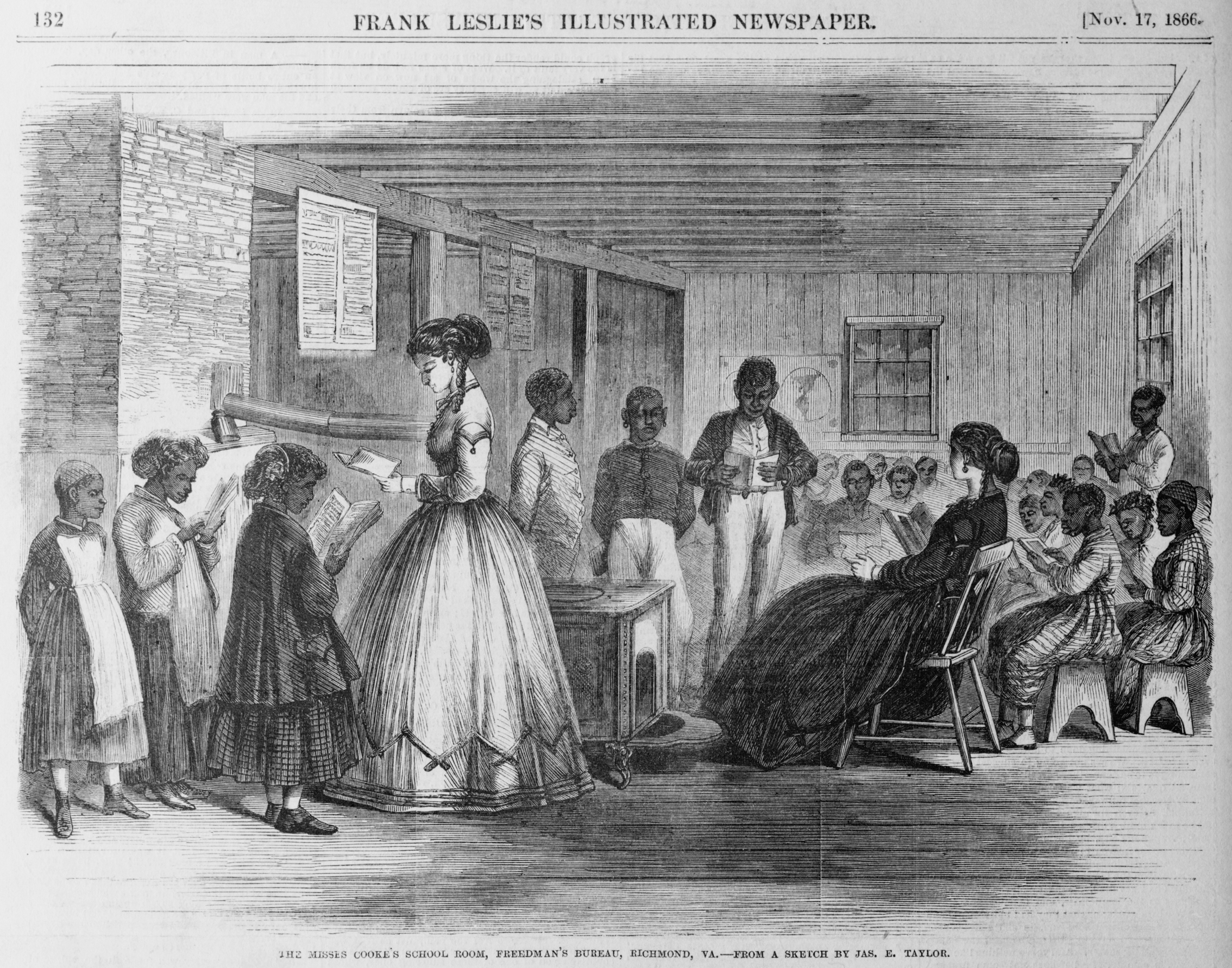
The schools that the Freedmen’s Bureau and the AMA established created dismay and resentment among wealthier white populations in the South and were sometimes targets of violence. Racists and others who resisted the type of federal government activism represented by the Freedmen’s Bureau denounced it as both a waste of federal money and a foolish effort that encouraged laziness among blacks. Congress renewed the bureau’s charter in 1866, but President Johnson, who steadfastly believed that the work of restoring the Union had been completed, vetoed the re-chartering. Radical Republicans continued to support the bureau, igniting a contest between Congress and the president that intensified during the next several years. Part of this dispute involved conflicting visions of the proper role of the federal government. Radical Republicans believed in the constructive power of the federal government to ensure a better day for freed people. Others, including Johnson, denied that the government had any role to play.
The extent of the racism displayed by opponents of reconstruction is clear in the image below. In the foreground shows an indolent black man wonders, “Whar is de use for me to work as long as dey make dese appropriations.” White men toil in the background, chopping wood and plowing a field. The text above them reads, “In the sweat of thy face shall thou eat bread. . . . The white man must work to keep his children and pay his taxes.” In the middle background, the Freedmen’s Bureau looks like the Capitol, and the pillars are inscribed with racist assumptions of things blacks value, like “rum,” “idleness,” and “white women.”

In 1865 and 1866, as Johnson announced the successful end of Reconstruction, southern states began to pass discriminatory state laws collectively known as black codes. While the laws varied in content and severity from state to state, the codes were designed to maintain the social and economic structure of racial slavery in the absence of slavery itself. The laws cemented white supremacy by restricting the civic participation of freed slaves: depriving them of the right to vote, the right to serve on juries, the right to own or carry weapons, and, in some cases, even the right to rent or lease land.
In addition to insuring that whites would remain at the top of the social pyramid, the black codes were designed to meet an important economic need in the postwar South. Slavery had been the main pillar of economic stability in the region before the war. Planters in the southern states were reluctant to make the transition from a slave economy to one where labor was purchased on the open market. Instead, they drafted black laws that would re-create the antebellum economic structure with the façade of a free-labor system. Black codes used a variety of tactics to tie freed slaves to the land. In order to get paying work, the former slaves were forced to sign contracts that prevented blacks from working for more than one employer. Unlike a free labor market, mandatory contracts meant blacks could not influence wages and work conditions by choosing the employer who gave them the best terms. As a result the former slaves were forced to work for very low wages and had no ability to supplement their income with additional work. To make ends meet workers relied on loans from their employers; the debt incurred ensured that they could never escape from their condition. Former slaves who attempted to violate these contracts would be fined or beaten. Those who refused to sign contracts at all could be arrested for vagrancy and then made to work for no wages, essentially being re-enslaved under the Thirteenth Amendment’s exception for people convicted of crimes.
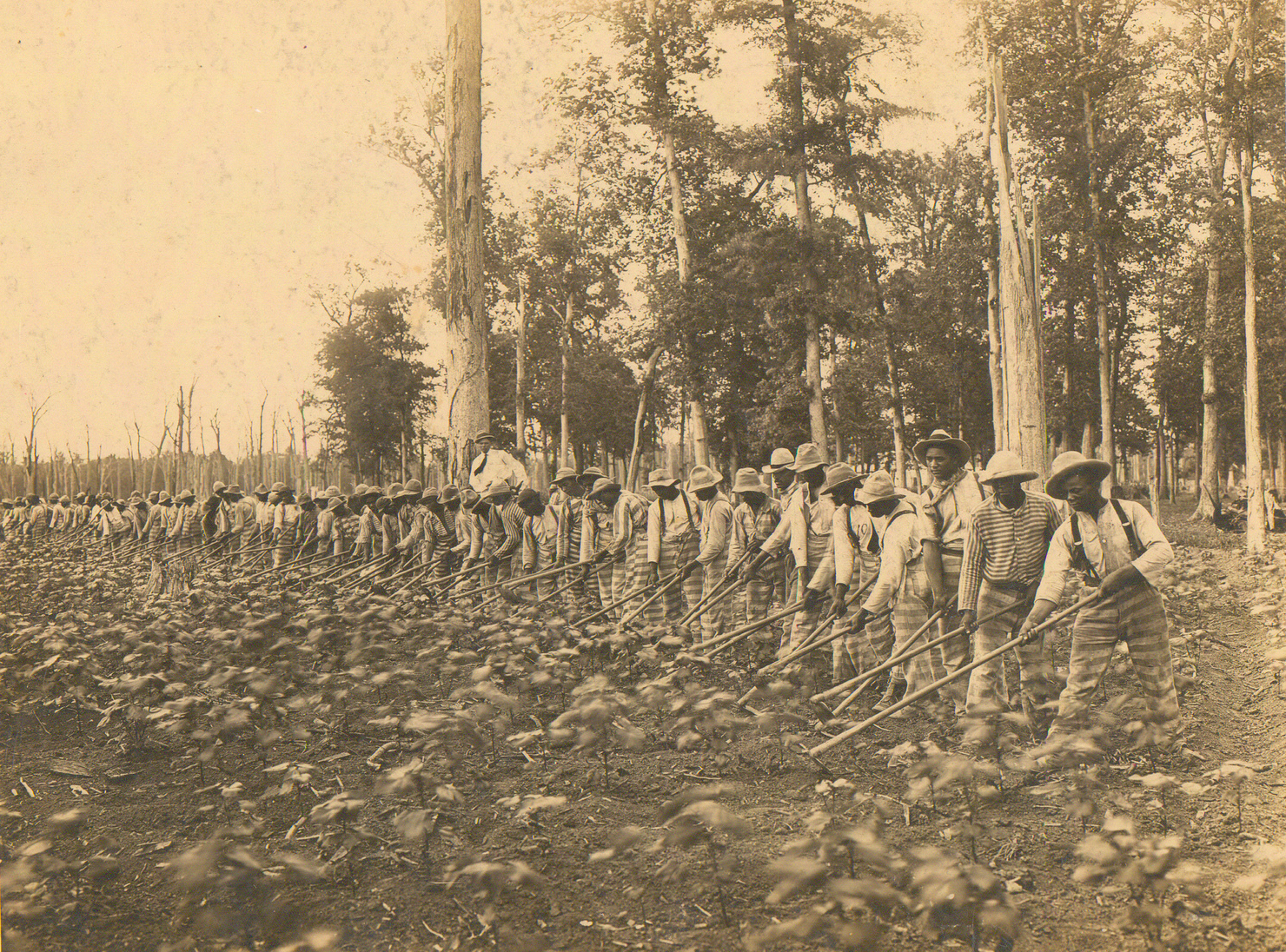
The black codes left no doubt that the former Confederate states intended to maintain white supremacy at all costs. Their racist state laws helped spur the congressional Joint Committee on Reconstruction into action. Its members felt that the Thirteenth Amendment did not go far enough and in April 1866 passed the first Civil Rights Act, which established the citizenship of African Americans. This contradicted the Supreme Court’s 1857 Dred Scott decision, which had declared that blacks could never be citizens, and gave the federal government the ability to intervene in state affairs to protect the rights of black citizens. President Johnson vetoed the 1866 Civil Rights Act but Congress mustered the two thirds majority it needed to override his veto. Despite the Civil Rights Act, the black codes endured and became the foundation of the racially discriminatory Jim Crow segregation policies that impoverished generations of African Americans.

Opponents of the Civil Rights Act argued that the 1866 statute could not alter the interpretation of the Constitution provided by Chief Justice Taney in the Dred Scott decision. Seeking to overcome these legal questions, Radical Republicans drafted and passed another constitutional amendment with provisions that followed those of the 1866 Civil Rights Act. In July 1866, the Fourteenth Amendment went to state legislatures for ratification. The Fourteenth Amendment declared, “All persons born or naturalized in the United States and subject to the jurisdiction thereof, are citizens of the United States and of the State wherein they reside.” It gave citizens equal protection under both the state and federal law, overturning the Dred Scott decision. It also finally eliminated the three-fifths compromise of the 1787 Constitution, under which slaves had been counted as three-fifths of a free white person, and it reduced the number of House representatives and Electoral College electors available to any state that denied suffrage to any adult male inhabitant, black or white. As Radical Republicans had proposed in the Wade-Davis bill, individuals who had “engaged in insurrection or rebellion [against] . . . or given aid or comfort to the enemies [of]” the United States were barred from holding political (state or federal) or military office unless pardoned by two-thirds of Congress, not just by the President.
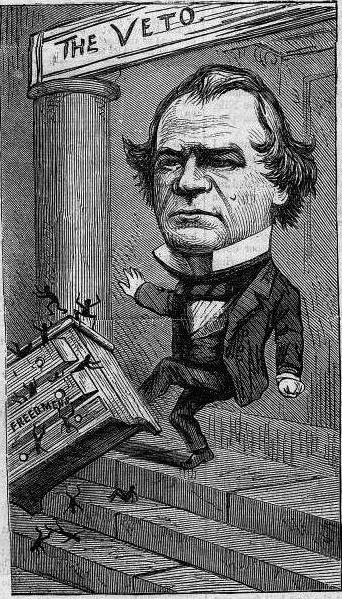
The Fourteenth Amendment also addressed the question of debts arising from the Civil War by specifying that all debts incurred by fighting to defeat the Confederacy would be honored. Confederate debts, however, would not: “[N]either the United States nor any State shall assume or pay any debt or obligation incurred in aid of insurrection or rebellion against the United States, or any claim for the loss or emancipation of any slave; but all such debts, obligations and claims shall be held illegal and void.” The claims of former slaveholders requesting compensation for slave property had no standing. Any state that ratified the Fourteenth Amendment would automatically be readmitted. All former Confederate states refused to ratify the amendment in 1866. But President Johnson provided them with a plausible argument when he openly advocated rejection of the Fourteenth Amendment. In late summer of 1866, he gave a series of speeches known as the “swing around the circle,” designed to gather support for his mild version of Reconstruction. Johnson felt that ending slavery went far enough. He continued to believe that blacks were inferior to whites. The president’s speeches proved to be a disaster when hecklers provoked Johnson to make damaging statements. Radical Republicans charged that Johnson had been drunk when he made his speeches. As a result, Johnson’s reputation plummeted.
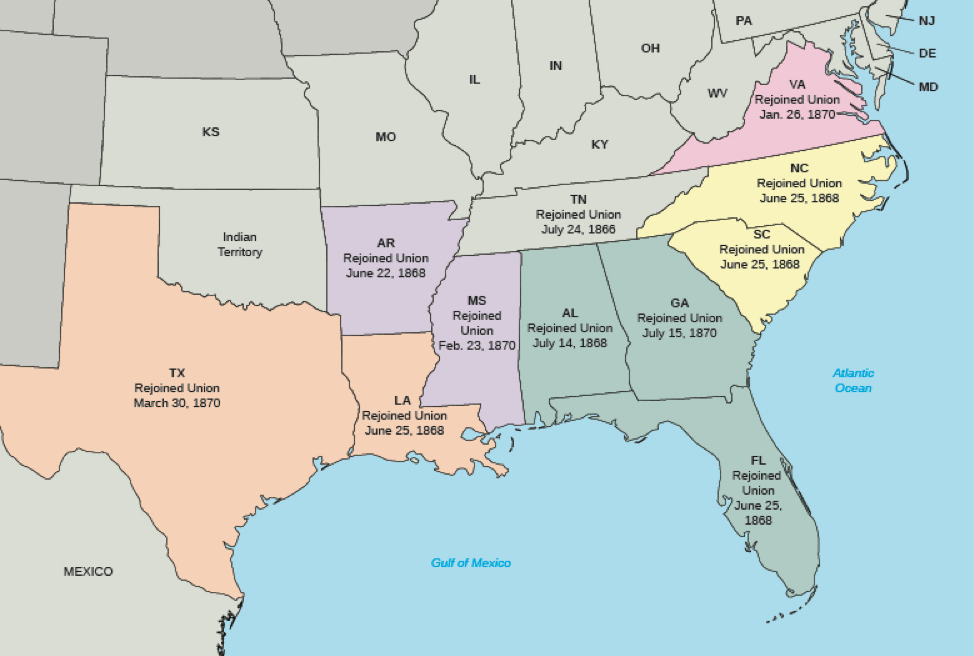
The 1867 Military Reconstruction Act and three supplementary laws passed by Congress that year were the Radical Republicans’ attempt to deal with the disorder in the South. The 1867 acts divided the ten southern states that had refused to ratify the Fourteenth Amendment into five military districts (Tennessee had already been readmitted to the Union by this time and so was excluded from these acts). Martial law was imposed, and a Union general put in command of each district. Twenty thousand federal troops stationed in the districts were charged with protecting former slaves. When a supplementary act extended the right to vote to all freed men of voting age (21 years old), the military in each district oversaw the registration of voters and elections. Only after new state constitutions had been written and states had ratified the Fourteenth Amendment could these states rejoin the Union. Predictably, President Johnson vetoed the Reconstruction Acts, viewing them as both unnecessary and unconstitutional. Once again, Congress overrode Johnson’s vetoes. By the end of 1870, all the southern states under military rule had ratified the Fourteenth Amendment and been restored to the Union.
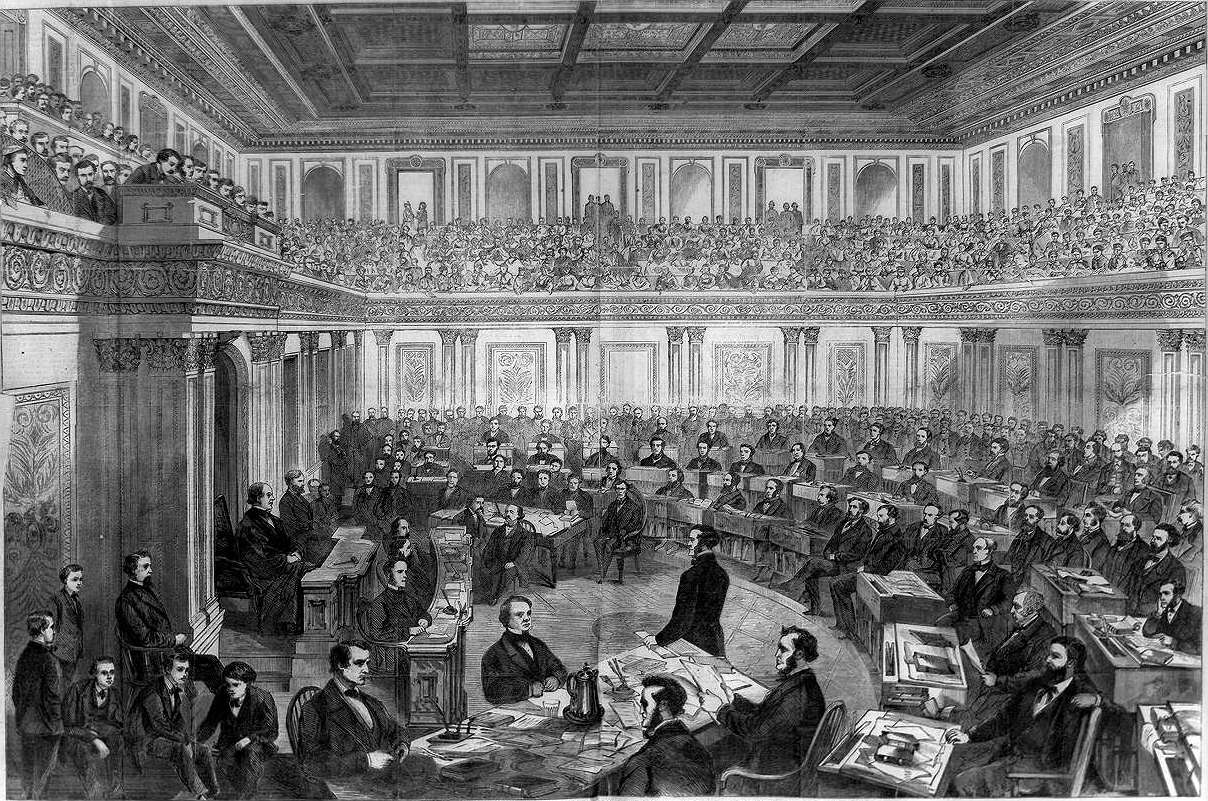
President Johnson’s relentless vetoing of congressional reconstruction measures created a deep rift in Washington DC. Johnson’s prickly personality and firm belief in white supremacy proved to be a liability. Johnson declared in his 1868 State of the Union address, “The attempt to place the white population under the domination of persons of color in the South has impaired, if not destroyed, the kindly relations that had previously existed between them; and mutual distrust has engendered a feeling of animosity which leading in some instances to collision and bloodshed, has prevented that cooperation between the two races so essential to the success of industrial enterprise in the southern states.” The president’s racism and ignorant insistence that there had once been “kindly relations” between slaveowners and slaves put him even further at odds with those in Congress who wanted to create full equality between blacks and whites.
The Republican majority in Congress grew to despise the president and wanted to prevent him from interfering in congressional Reconstruction. To protect their reconstruction acts Radical Republicans passed the Command of the Army Act, which prohibited the president from issuing military orders except through the commanding general of the army, who could not be relieved or reassigned without the consent of the Senate. The Tenure of Office Act, passed in 1867, required the president to gain the approval of the Senate whenever he appointed or removed officials. In August 1867 President Johnson removed Secretary of War Edwin M. Stanton, who had aligned himself with the Radical Republicans, without gaining Senate approval. He replaced Stanton with Ulysses S. Grant, but Grant resigned and sided with the Republicans against the president. Many Radical Republicans welcomed this blunder by the president and the House of Representatives quickly drafted a resolution to impeach him, a first in American history. In impeachment proceedings, the House of Representatives serves as the prosecution and the Senate acts as judge, deciding whether the president should be removed from office. The House brought eleven counts against Johnson, all alleging his encroachment on the powers of Congress. Johnson barely survived. Seven Republicans joined the Democrats and independents to support acquittal; the final vote was 35 to 19, one vote short of the required two-thirds majority. The Radicals then dropped the impeachment effort, but the events had effectively silenced President Johnson, and Radical Republicans continued with their plan to reconstruct the South.
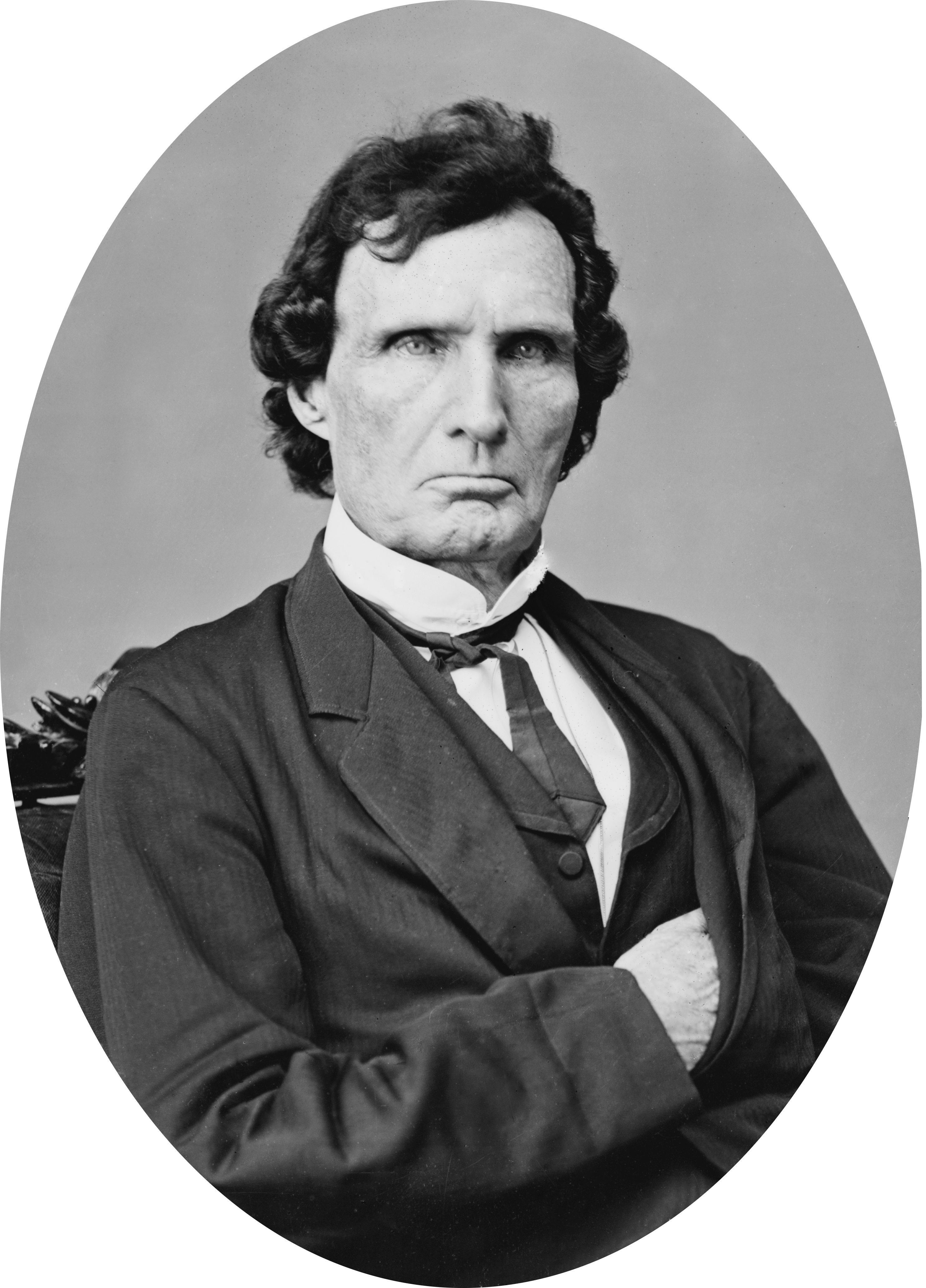
In November 1868, Ulysses S. Grant, the Union’s war hero, easily won the presidency in a landslide victory. The Republican campaign blamed the devastating Civil War and the violence of its aftermath on the rival party, a strategy that southerners called “waving the bloody shirt.” Though Grant did not consider himself a Radical Republican, his victory allowed the continuance of the Radical Reconstruction program. In the winter of 1869, Republicans introduced the third constitutional amendment of the Reconstruction era. The Fifteenth Amendment directed that “[t]he right of citizens of the United States to vote shall not be denied or abridged by the United States or by any State on account of race, color, or previous condition of servitude.” Unfortunately, as part of a compromise to ensure the passage of the amendment with the broadest possible support, drafters of the amendment specifically excluded language that addressed literacy tests and poll taxes, the most common ways blacks were traditionally disenfranchised in both the North and the South. Indeed, Radical Republican leader Charles Sumner of Massachusetts refused to vote for the amendment precisely because it did not address these obvious loopholes. Despite these weaknesses, the language of the amendment did provide for universal manhood suffrage and identified black men, including those who had been slaves, as deserving the right to vote. With the ratification of the Fifteenth Amendment in 1870, many believed that the process of restoring the Union was safely coming to a close and that the rights of freed slaves were finally secure. African American communities expressed great hope as they celebrated what they understood to be a national confirmation of their unqualified citizenship.
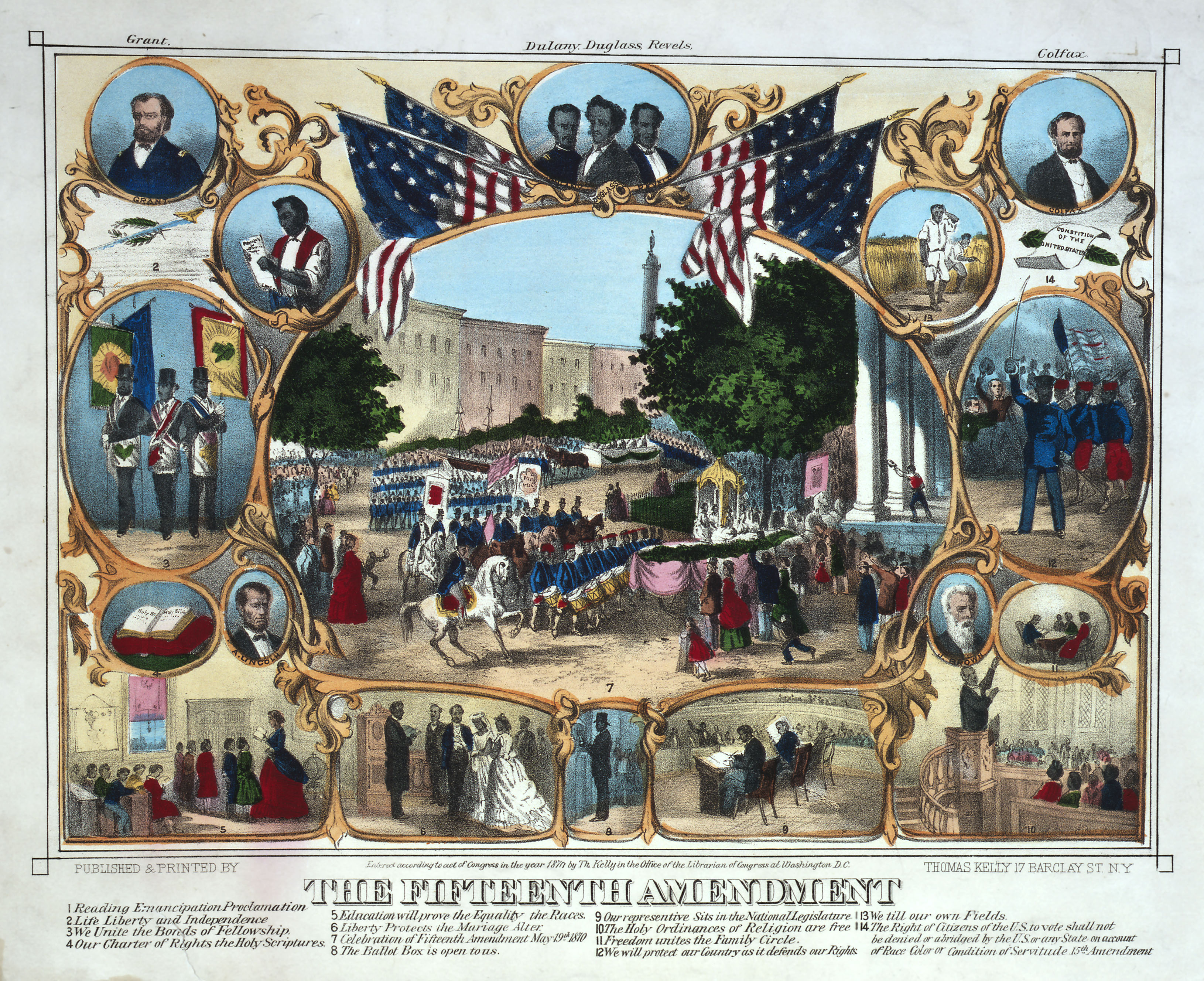
While the Fifteenth Amendment was a victory for black rights, many women’s activists who had been campaigning for decades for the right to vote felt betrayed that the amendment’s language had been limited to include only men. This was especially disappointing because many women’s rights activists, such as Susan B. Anthony and Elizabeth Cady Stanton, had played significant roles in the abolitionist movement leading up to the Civil War. After the war, women and men, white and black, formed the American Equal Rights Association (AERA) to secure “equal Rights to all American citizens, especially the right of suffrage, irrespective of race, color or sex.” With the adoption of the Fourteenth Amendment, which specifically qualified the liberties it extended to “male citizens,” it seemed progress in civil rights was not only passing women by but was purposely codifying their exclusion. As Congress debated the language of the Fifteenth Amendment, some held out hope that it would finally extend the franchise to women. Those hopes were dashed when Congress adopted the final language.
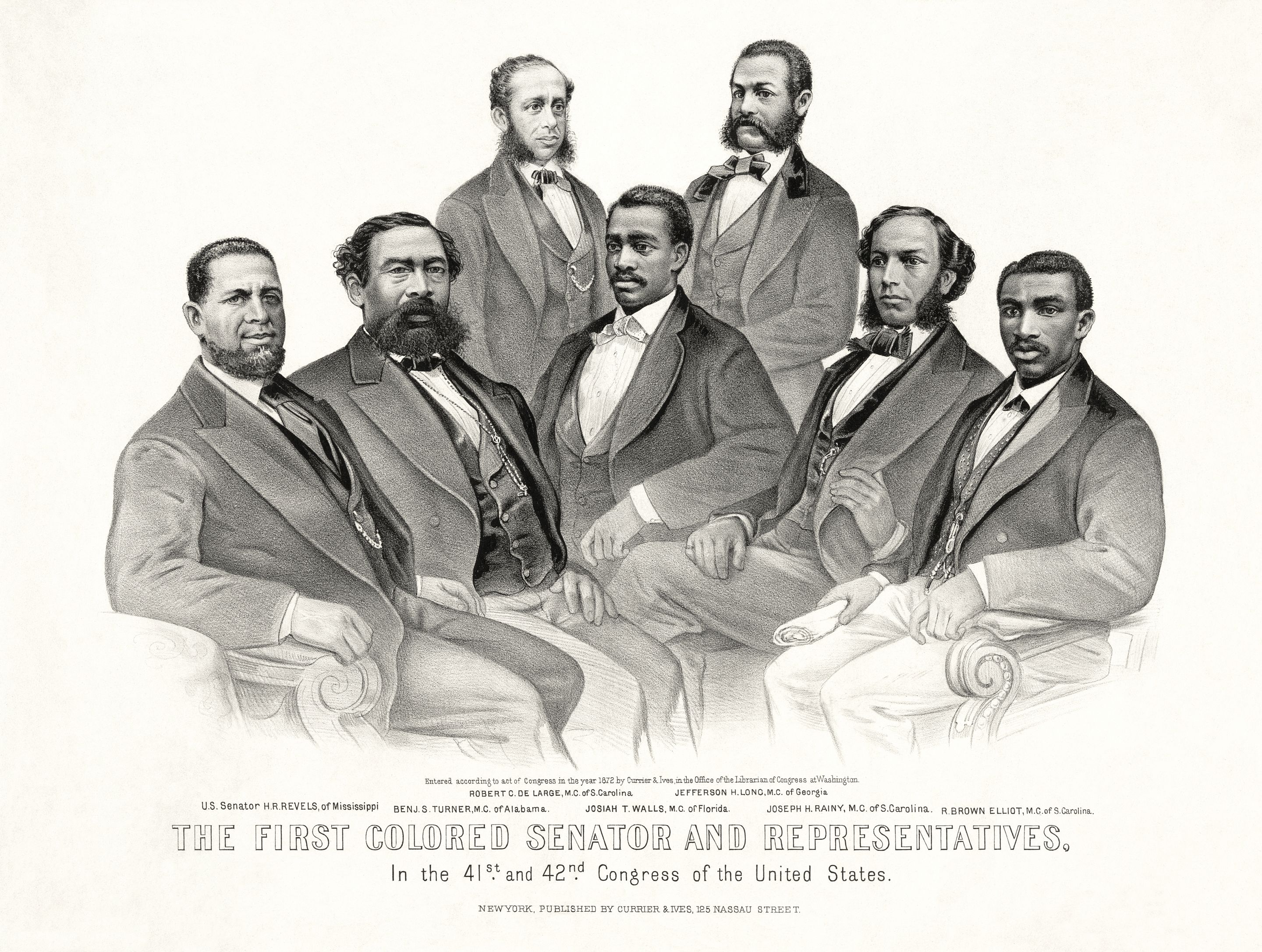
The consequence of these frustrated hopes was a split in the civil rights movement that had once been united in support of both African Americans and women. Seeing this split occur, Frederick Douglass, a great admirer of Stanton, struggled to argue for a piecemeal approach that should prioritize the franchise for black men if that was the only option. He insisted that his support for women’s right to vote was sincere, but that getting black men the right to vote was “of the most urgent necessity.” Douglass believed black men were in much greater danger than white women. “The government of this country loves women,” he argued. “They are the sisters, mothers, wives and daughters of our rulers; but the negro is loathed. . . . The negro needs suffrage to protect his life and property, and to ensure him respect and education.” The truth of Douglass’ appeals were largely accepted by women’s rights leaders and AERA members like Lucy Stone and Henry Browne Blackwell, but Stanton and Anthony demanded immediate action. They felt aggrieved that other abolitionists, with whom they had worked closely for years, did not demand that women be included in the language of the amendments. Stanton argued that the women’s vote would be necessary to counter the influence of uneducated freedmen in the South and the waves of poor European immigrants arriving in the East.
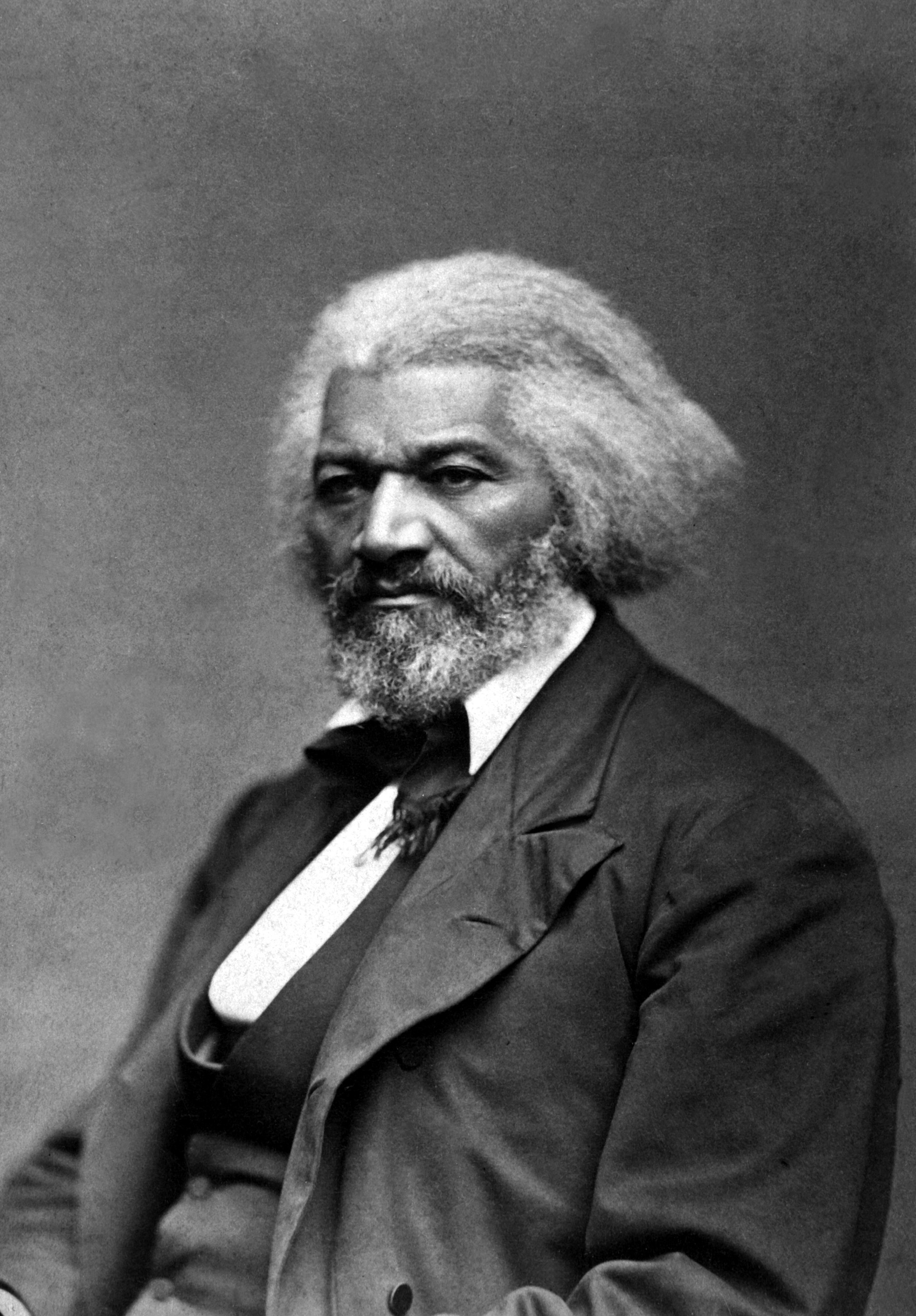
In 1869, Stanton and Anthony helped organize the National Woman Suffrage Association (NWSA). Virginia Minor, a member of the NWSA, attempted to register to vote in St. Louis Missouri in 1872. When election officials turned her away, Minor brought the issue to the Missouri state courts, arguing that the Fourteenth Amendment ensured that she was a citizen with the right to vote. The case eventually made its way to the Supreme Court, which declared in 1874 that “the constitution of the United States does not confer the right of suffrage upon any one,” effectively dismissing Minor’s claim. Despite this defeat and the Fifteenth Amendment’s failure to guarantee female suffrage, women did gain the right to vote in western territories, with the Wyoming Territory leading the way in 1869. One reason for this was a belief that giving women the right to vote would provide a moral compass to the otherwise lawless western frontier. Extending the right to vote in western territories also provided an incentive for white women to emigrate to the West, where they were scarce.
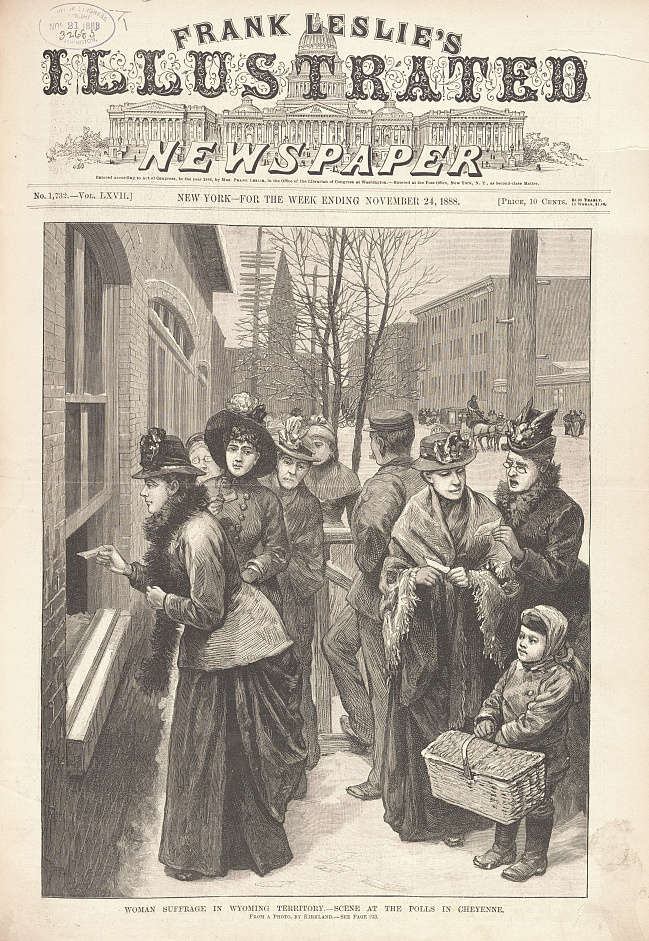
Media Attributions
- Republican_presidential_ticket_1864b © Currier & Ives is licensed under a Public Domain license
- Johnson_inauguration © Frank Leslie's Newspaper is licensed under a Public Domain license
- 2880px-President_Andrew_Johnson_Pardoning_Rebels_at_the_White_House © Stanley Fox is licensed under a Public Domain license
- Freedman_bureau_harpers_cartoon © A.R. Waud is licensed under a Public Domain license
- Freedman_Bureau_Richmond_VA © Frank Leslie's Newspaper is licensed under a Public Domain license
- Freedman’s_bureau © Bernard F. Reilly is licensed under a Public Domain license
- Parchman_prison_convict_labor_1911 © Unknown is licensed under a Public Domain license
- Racistcampaignposter1 © Unknown is licensed under a Public Domain license
- Nast_on_Andrew_Johnson © Thomas Nast is licensed under a Public Domain license
- militarydistricts © Openstax is licensed under a CC BY-SA (Attribution ShareAlike) license
- Andrew_Johnson_impeachment_trial © Theodore R. Davis is licensed under a Public Domain license
- Thaddeus_Stevens_-_Brady-Handy-crop © Mathew Brady is licensed under a Public Domain license
- 15th-amendment-celebration-1870 © Thomas Kelly is licensed under a Public Domain license
- 2880px-First_Colored_Senator_and_Representatives © Currier & Ives is licensed under a Public Domain license
- WAR AND CONFLICT BOOKERA: CIVIL WAR/BACKGROUND: SLAVERY & ABOLITIONISM © George K. Warren is licensed under a Public Domain license
- 13020v © Frank Leslie's Newspaper is licensed under a Public Domain license

